Research
One of the overarching theme of ecology is studying how biotic interactions change under different environmental factors, and how these changes affect community structure and biodiversity. Using a combination of theoretical models, experiments, and large monitoring datasets, I approach this overarching theme from two aspects:
1. How does the timing of species interactions affect the community structure and biodiversity?
2. How does changes in spatial and temporal overlaps between species affect their interactions?
If you are interested in any of the following projects, especially the ongoing ones, or would like a copy of the paper, feel free to contact me!
Novel Range Shifts in Birds of North America - Theme 2
Climate change have induced consistent and directional shifts of species distributions. Despite numerous documented examples, few studies focus on the subsequent shifts in species interactions and their community-level consequences. With Chia Hsieh and Lydia Beaudrot, we are in the process of using large monitoring datasets of North American Birds to evaluate how novel spatial overlaps between species affect local communities.
This is hopefully the start of many exciting projects on Theme 2 – stay tuned!
Time-dependence of Plant-microbe Interactions - Theme 1

Plant-microbe interactions are ubiquitous and fundamental to plant community structure, yet theory and experiments often focus on plants, and treat microbes as either fixed environments or static snapshots of time. With Jiaqi Tan, we design experiments using duckweeds (subfamily Lemnoideae) and their naturally associated microbiomes to study how the length of interaction between the resident plant and its microbes affect the microbiome composition and its feedback on the future colonizing plant.
Ongoing Project – stay tuned!
Time-dependence of Higher-order Interactions - Theme 1
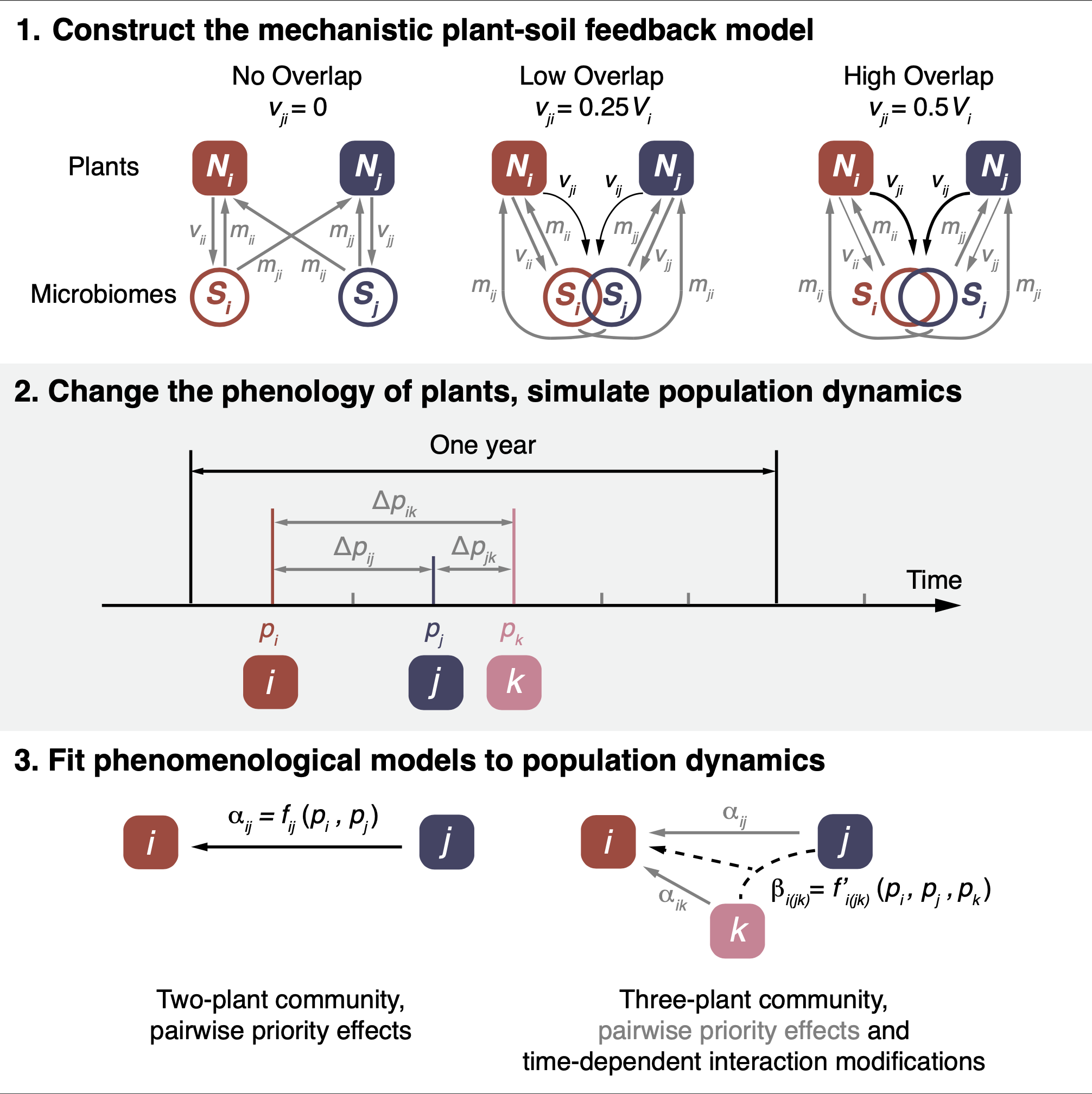
Complex communities in nature often contain interactions beyond pairwise (i.e., higher-order interactions). While common, little is known about how they change with the timing of species during community assembly. In nature, the time-dependence of interaction modifications could arise from pllant-soil feedback: the different phenology of plants may affect the composition of soil microbiomes and subsequently their effects on other plants. With Xinyi Yan, we first develop a quantitative framework of time-dependent interaction modification, then apply this framework to data generated by a novel mechanistic plant-soil feedback model. We find strong time-dependent interaction modifications when the soil microbiomes of all plants in the community greatly overlaps, which can arise from plants sharing pathogens or mutualists in nature. Our findings highlight the need of considering time in complex communities.
Publication
Zou, H.-X.*, X. Yan, and V.H.W. Rudolf. 2024. Time-dependent intetaction modification generated from plant-soil feedback. Accepted, Ecology Letters. [preprint] [code]
Bridging Theory and Experiments of Priority Effects - Theme 1
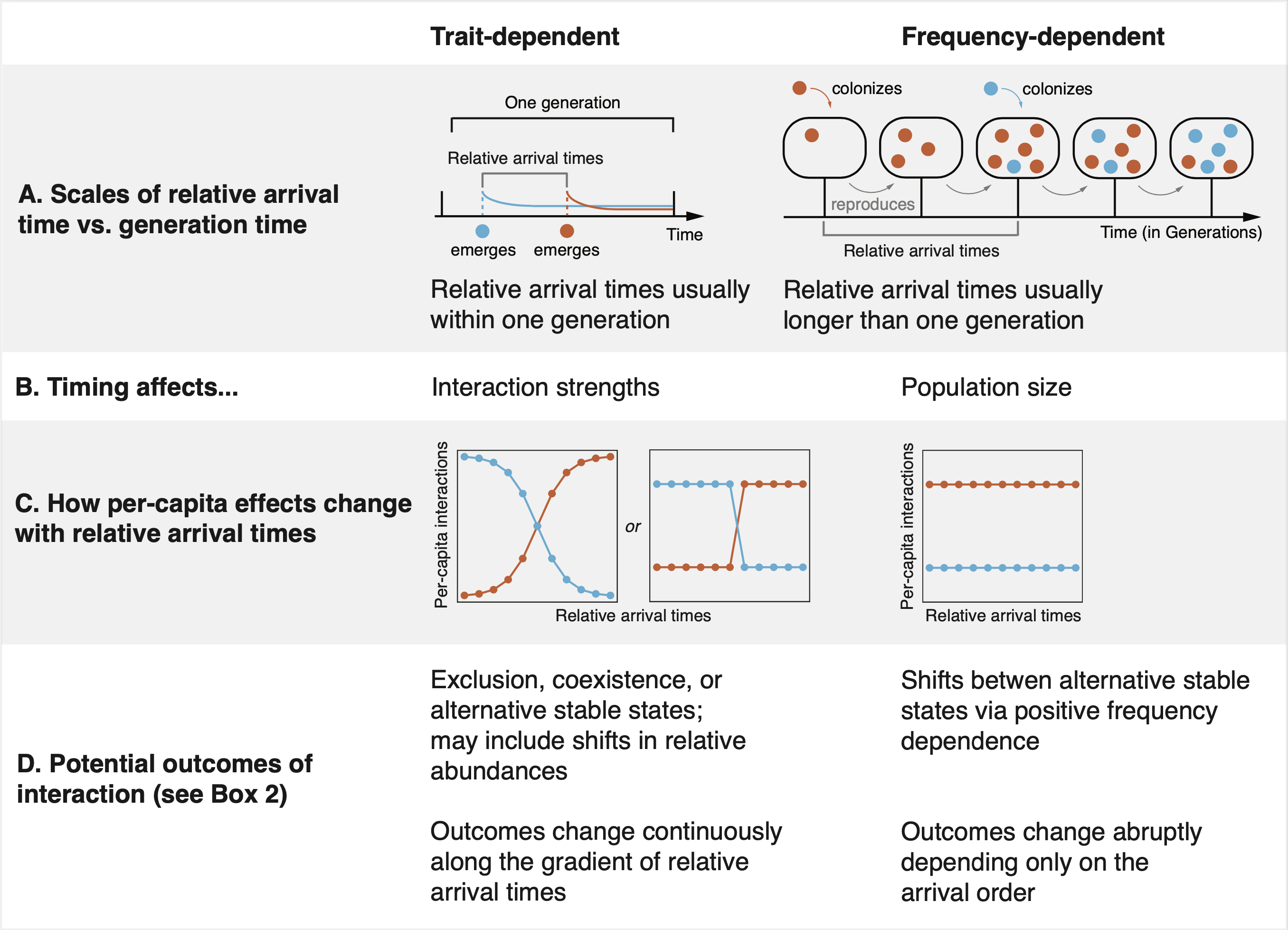
Despite a long history and recent advances, current body of theory only describes priority effects driven by positive frequency dependence, while many empirical studies identify biological mechanisms beyond this mechanism. To bridge this gap, we categorize priority effects as frequency-dependent or trait-dependent based on their underlying biological mechanisms. The two categories represent different biological mechanisms of priority effects that can have distinctive local and regional consequences that are still largely unexplored. Our framework encourages future studies to explicitly consider the biological mechanisms and the time scales at which they operate when studying and modeling priority effects.
Publication
Zou, H.-X., and V.H.W. Rudolf. 2023. Bridging theory and experiments of priority effects. Trends in Ecology and Evolution. [paper] [supplemental information] [code and data]
Priority Effects and Dispersal-Diversity Relationships - Theme 1
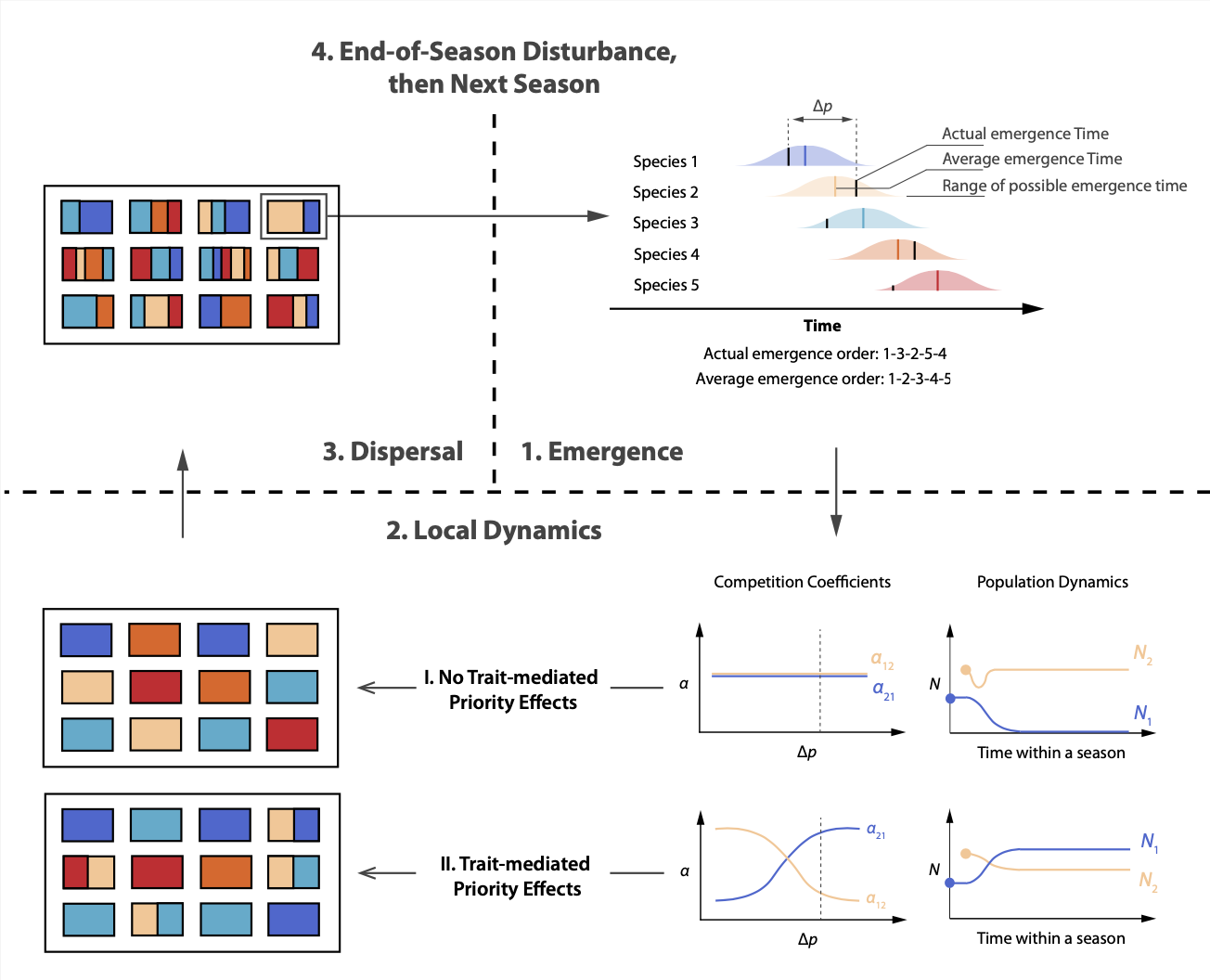
Priority effects are ubiquitous in nature and determine local community structure, but we know surprisingly little about how it influences biodiversity across different spatial scales. Here, we use a seasonal metacommunity model to show that biodiversity patterns and the homogenizing effect of high dispersal depend on the specific mechanisms underlying priority effects. When priority effects are driven by a numeric advantage, diversity measurements are highly sensitive to initial conditions and high dispersal homogenizes communities. However, when local priority effects arise from phenological shifts that alter species interaction strength (trait-dependent priority effects), local, regional, and temporal diversity are higher and are surprisingly robust to variation in dispersal and initial conditions, given spatiotemporal variations in phenology. Our results highlight that accounting for the mechanisms underlying priority effects is fundamental to understanding the maintenance of regional biodiversity.
Publication
Zou, H.-X., and V.H.W. Rudolf. 2023. Priority effects determine how dispersal affects biodiversity in seasonal metacommunities. The American Naturalist. [paper] [code] [data]
Effect of Arrival Time and Number of Generations per Season on Coexistence - Theme 1
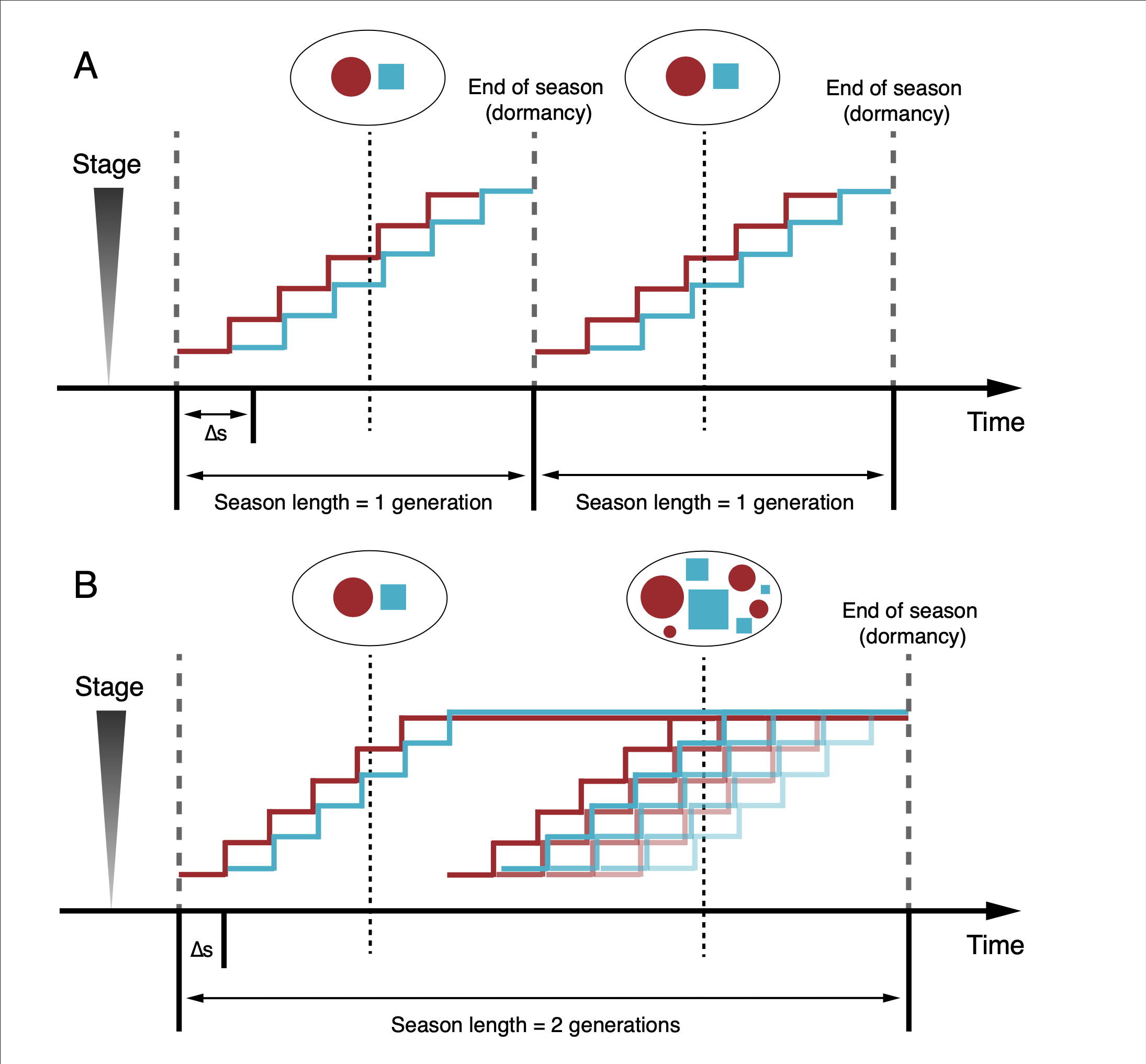
The role of priority effects in shaping the long-term dynamics of seasonal communities is poorly resolved. With Sebastian Schreiber, we use a general stage-structured competition model to determine how different mechanisms of priority effects may influence the long-term competition outcomes in seasonal systems. Specifically, we assume that the strength of interspecific competition depends on the stage of both species. This mechanism generates “stage-mediated priority effects” that strongly affect long-term competition outcomes with less generations per growing season, but these priority effects diminish when each season consists of more generations. Our model reveals a novel link between the number of generations in a season and the consequences of priority effects, suggesting that consequences of phenological shifts driven by climate change should depend on specific life histories of organisms.
Experiments with Tribolium flour beetles are ongoing to test our findings.
Publication
Zou, H.-X., S.J. Schreiber, and V.H.W. Rudolf. 2023. Stage-mediated priority effects and species life history shape long-term competition dynamics. Proceedings of Royal Society B: Biological Sciences. [paper] [code]
Primary Succession of Plant Community on Industrial Waste
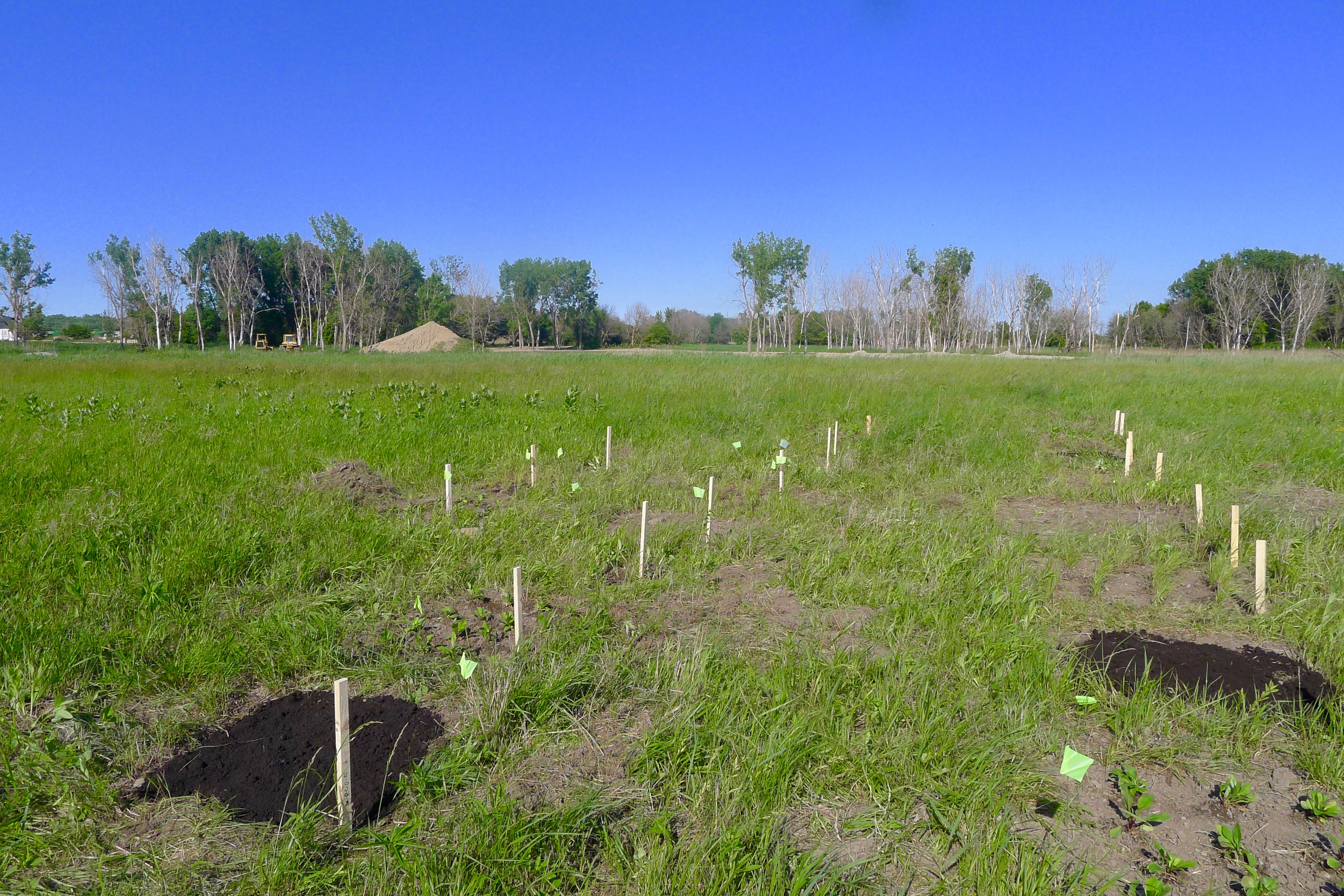
Slag, waste from the steel-making process, contains large amounts of calcium, magnesium, iron and other heavy metals. While many sites have undergone active restoration, traditional methods such as topsoil capping or phytoremediation performed poorly. Nevertheless, slag hosts surprisingly diverse spontaneous plant communities, but the assembly and structure of such communities is poorly studied. Collaborating with Cathy Pfister and Alison Anastasio, we characterized plant communities on two slag sites in Calumet region on the south side of Chicago. Together with controlled experiments, we showed that species composition was fundamentally different between slag and non-slag communities and that slag communities recovered slower from disturbance, suggesting a slower succession process. Interestingly, native plants with high conservation values were also spotted on slag, highlighting the potential of industrial sites serving as native plant refugia through habitat reclamation.
Publication
Zou H.-X., A.E. Anastasio, and C.A. Pfister. 2019. Early succession on slag compared to urban soil: A slower recovery. PLoS ONE 14(12): e0224214. [paper] [data]
